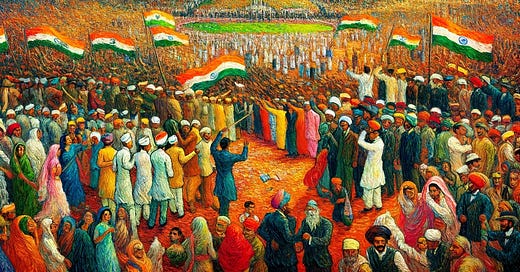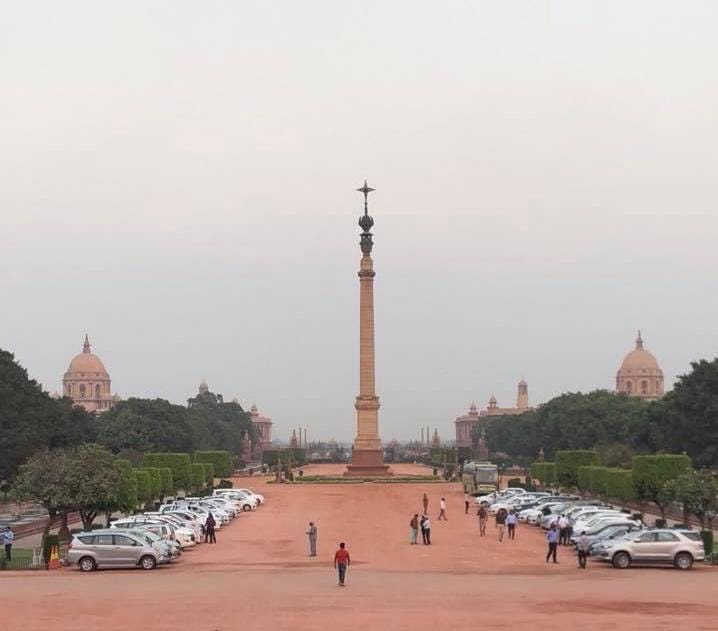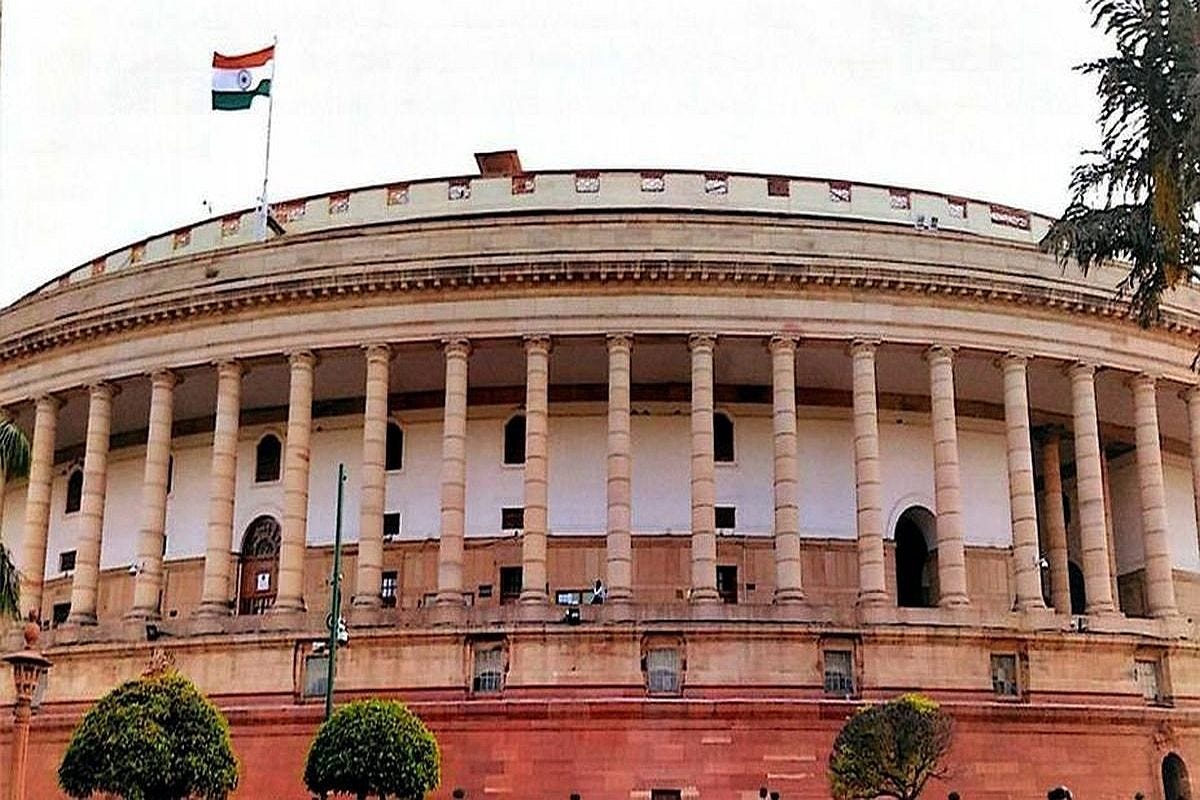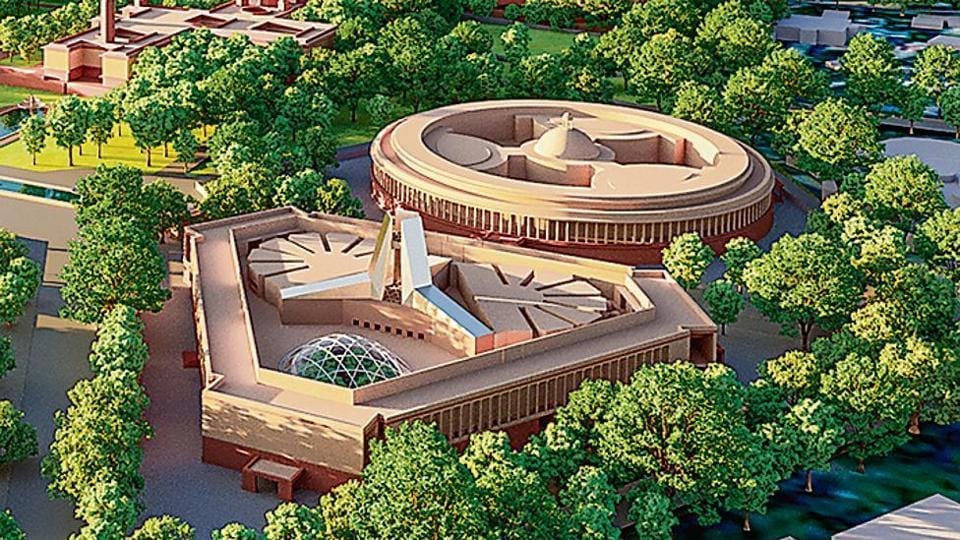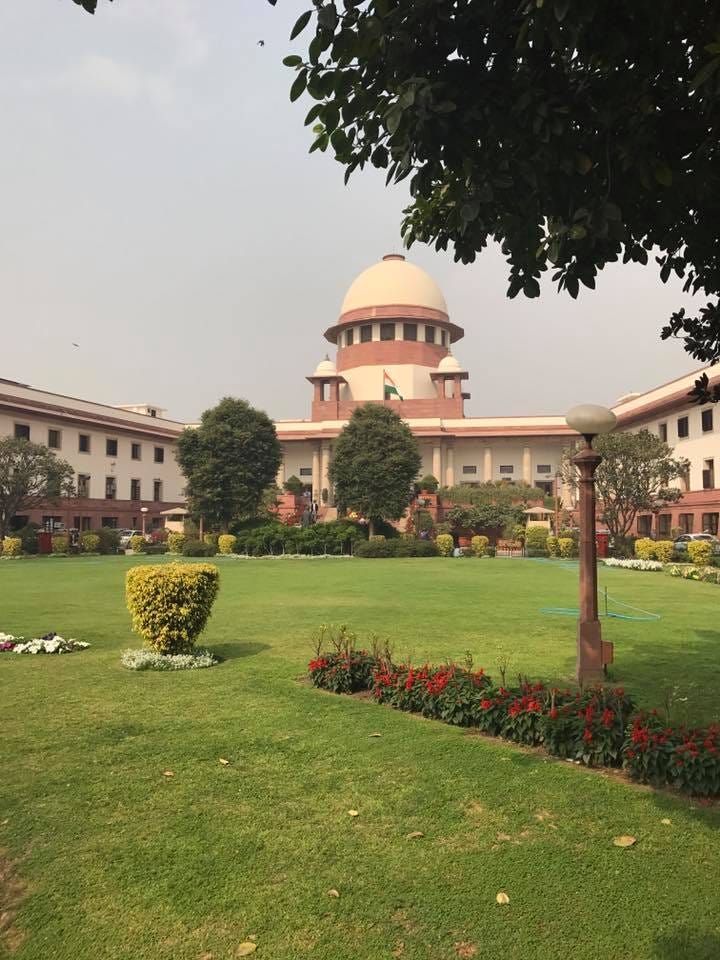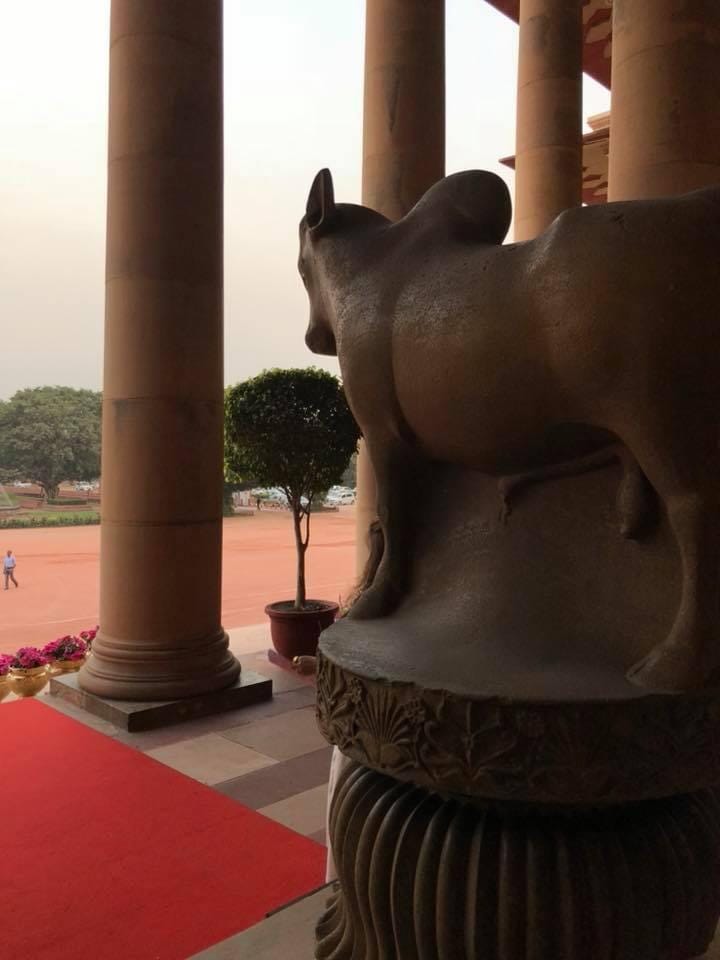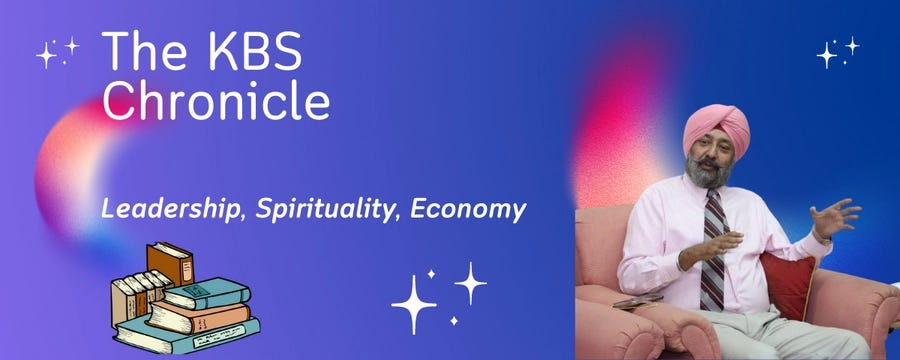Republic of Bharat@74– no longer a USSR
Union of Self-Proclaimed Sovereign Republics: Our musings on the Republic Day.
Republic of India at 74: From Fragmentation to Integration
As we celebrate the 74th Republic Day of India, it is a moment to reflect on the journey from a fragmented polity and country to a unified, robust Republic. In the past, particularly during periods of weakened central governance and coalition politics, India witnessed the rise of various entities within the Nation, each claiming quasi-sovereign status, on account of their “autonomous” constitutional status. These institutions, emerging both formally and informally, often challenged the unified sovereignty of the Republic through their actions and declarations. They positioned themselves as independent custodians of rights and responsibilities, creating a mosaic of multiple, self-proclaimed sovereign quasi-republics within the Nation. However, today, as the Republic of India steps into its 75th year, the narrative has shifted. The nation has moved away from this fragmented past towards a more consolidated and cohesive Republic, firmly rooted in the constitutional ethos that defines its sovereign, democratic essence.
Exploring the Intricacies of Federalism in India
In challenging the common perception of India as simply a “Union of States,” we earlier delved deeper than just Article 1(1) of the Constitution. This exploration revealed a more complex federal structure, where the States of the Union of India can be created, bifurcated, and even transformed into Union Territories, solely by an Act of Parliament, without necessitating a constitutional amendment. This power highlights a centralised aspect of our federal system, underpinning the dynamic and often underappreciated flexibility of India's constitutional framework in managing its diverse states, rather provinces.
Secularism in the Indian Constitution: A Unique Interpretation
Today is an opportune moment to reflect on the nation's sovereign democratic essence, with a special focus on its nuanced approach to secularism. The addition of "secular" and "socialist" to the Constitution's Preamble during the emergency era, initiated through the 42nd amendment by Mrs. Indira Gandhi, represented a subtle yet significant reaffirmation. This was more than just an addition of terms; it was a reiteration of the secular vision laid down by India's founding fathers. Their concept of secularism was distinct from the conventional notion of state-religion separation, envisioning instead a nation where all religions and their followers are treated with equal respect and rights. This principle has been a fundamental aspect, a basic feature, of the Indian Constitution since its inception, long before the formal inclusion of "secular" in 1976. Such a foundational approach highlights the Constitution's dedication to religious equality and pluralism, mirroring the diverse and inclusive fabric of India.
Addressing the Shift in Secular Dynamics
In a different analysis, we addressed the issue of political appeasement of the largest minority community and its impact on India's secular trajectory. Such actions, over time, have led to a deviation from the true essence of secularism as envisioned in the Indian Constitution. Since 2014, Prime Minister Narendra Modi has been working towards realigning the nation with its foundational secular principles. Despite these efforts, he faces criticism and accusations of attempting to establish a “Hindu Rashtra.” In this piece, we have countered such arguments, advocating for a fair assessment of the efforts to restore the country's genuine and authentic secular ethos.
The Emergence of Mini-Republics within the Republic
On the 74th Republic Day, our reflections lead us to consider the periods of weakened central governance in India's history, since Independence. Such times, often marked by coalition politics or dual leadership, saw the emergence of various formal and informal quasi-sovereign entities within the Nation. These entities, through their actions or rhetoric, positioned themselves as sole custodians of the sovereign rights and responsibilities of the Indian Republic. However, under the leadership of Narendra Modi, despite a few valid critiques and contentious decisions like demonetization, there has been a reaffirmation and reinforcement of a more cohesive Republic. PM Modi's governance has brought about a unified voice that represents the sovereign interests of the Republic of India, replacing the previous dissonance of fragmented semi-republics with constitutional status.
Coalition Politics and Its Impact on Governance
The era of coalition governments, particularly post-Emergency, witnessed a Prime Minister often compelled to navigate through divergent political currents. This scenario, as described by Sardar Manmohan Singh as the “Coalition Dharma,” led to decisions that sometimes strayed from legal and ethical norms. During Prime Minister Atal Bihari Vajpayee's tenure (1999-2004), the influence of Mr. LK Advani exemplified internal Cabinet pressures, where the Prime Minister's decisions were not always conclusive. The UPA-I era further highlighted the complexity of coalition politics, with Left parties wielding significant influence, notably impacting critical decisions like the nuclear agreement and economic measures such as the disinvestment in BPCL and HPCL, which underwent multiple revisions in the Union Cabinet.
The Dynamics of Dual Power Centres in UPA-II
Under the UPA-II regime, led by Sardar Manmohan Singh, there was a semblance of stability, yet the governance was marked by the existence of dual power centres. The National Advisory Council (NAC), headed by Mrs. Sonia Gandhi, emerged as a formidable influence, often creating a parallel decision-making pathway. This dualism was evident as government secretaries were required to seek NAC's inputs before advancing files to the Cabinet Secretariat for the Union Council of Ministers' consideration and approval. In contrast, the current administration under Narendra Modi, bolstered by a stable majority and dynamic leadership, has streamlined this process. Decision-making has become more efficient, with quick resolutions at the Prime Ministerial level followed by subsequent Cabinet approvals, marking a departure from the indecisiveness and policy paralysis of previous administrations post-Rajiv Gandhi era.
Judicial Activism and the Supreme Court's Evolving Role
Until 2014, the evolution of India's constitution and its judicial system saw the Supreme Court occasionally overstepping its traditional role, leading to what was often referred to as judicial activism. The Court sometimes entered the executive domain, justifying its intervention on grounds of perceived inaction in fulfilling constitutional duties by the executive branch. Such decisions by the Apex Court occasionally strayed from a strict interpretation of the Constitution and established law, effectively creating its own jurisprudence. A prime example of this assertiveness was the nullification of the constitutional amendment concerning the National Judicial Appointments Commission in October 2015, a ruling that became emblematic of this era of judicial activism. Currently, the likelihood of achieving a unanimous decision across all political parties, as was once possible for such constitutional amendments, seems remote. This change indicates a significant shift in the dynamics of India's judicial and political spheres.
Jammu and Kashmir: Integration into the Indian Union
Prior to the abrogation of Article 370, the State of Jammu and Kashmir held a unique position within the Union of India, akin to a para-sovereign entity. Central laws, as listed in the Constitution's Central List, required the explicit consent of the Jammu and Kashmir Legislative Assembly for implementation in the state. This special status effectively rendered Jammu and Kashmir a quasi-sovereign entity within the larger Indian Republic. The Modi Government's decisive action to abrogate Article 370 has been a transformative step, resulting in the full integration of the state into the Union as two Union Territories. This bold move, now ratified by the Supreme Court of India, has significantly strengthened the cohesiveness and unity of the Indian Republic. “Ek nishan, ek pradhan aur ek vidhan” (one flag, one prime minister, and one constitution), was finally a reality.
Reassessing the Role and Power of the CBI
The Central Bureau of Investigation (CBI) has undergone a notable shift in its operational dynamics, especially following the Supreme Court's description of it as a “caged parrot.” Subsequently, the agency experienced a swing in the balance of power. Certain CBI directors, who need not be named here, seemingly adopted an overextended view of their authority, perceiving themselves as above the Prime Minister and the Council of Ministers in matters of investigating allegations of corruption related to government policies. While independence and a degree of autonomy are essential for any investigative agency, it is crucial to remember that such an entity is not sovereign and remains subject to the law. Instances where a Director had to be dismissed due to questionable actions underline the need for a balanced approach to power. The sovereign authority, vested through Parliament in the Union Council of Ministers headed by the Prime Minister, must be respected. The situation where an agency, lacking a statutory foundation and established by executive notification, assumed disproportionate influence, calls for introspection. Thankfully, now the balance has been restored. Such occurrences should serve as a cautionary tale, preventing any entity from overstepping its designated role.
The CAG's Role and the Telecom Spectrum Controversy
The Comptroller and Auditor General (CAG) holds a pivotal and independent constitutional role in maintaining the accounts and conducting audits for the Consolidated Fund of India and those of various states. A notable episode during the tenure of Mr. Vinod Rai, the then CAG, was the allegation of a massive scam concerning the allocation of telecom spectrum. The CAG reported notional losses in excess of 1.75 lakh crore rupees, attributing these to the policy decisions made regarding spectrum allocation. While it is not disputed that there may have been instances of illegal gratification, the significant point here is that these allegations and the subsequent public perception contributed to the downfall of the UPA government. Remarkably, despite the scale of the alleged scam, there have been no convictions to date, highlighting a complex interplay between policy decisions and their audit assessments. Today. CAG is back to doing what it was meant to— audit and accounts, including performance audit, of Government funds, rather than playing politics and building up larger than life image of its head.
Coal Allotment Case: The Conviction of HC Gupta
In a contrasting scenario, the policy and precedent concerning coal mine allotments, also red-flagged by the CAG, culminated in the conviction of the Union Coal Secretary, HC Gupta. Gupta, widely recognized for his integrity and competence, found himself penalized for adhering to longstanding practices. The court's decision to convict him was based on the presumption of a notional loss calculated against expected market prices, despite the absence of any allegations or evidence of direct or indirect illegal gratification on his part. Notably, no minister was charged in this case. This includes the period when Prime Minister Manmohan Singh, who also held the coal portfolio, approved the recommendations that led to Gupta's conviction. Although Singh was not named in a CBI charge-sheet, the Special Court issued him summons as an “accused” in 2015, which were stayed by the Supreme Court of India. Ultimately, the Special Court held that there was no prosecutable evidence against Mr Singh, effectively giving him a clean chit.
Evaluating the Role of the Election Commission of India
The Election Commission of India, a constitutional body tasked with overseeing the direction, superintendence, and control of elections in the country, has been instrumental in upholding the integrity of elections since Mr. TN Seshan's tenure. However, concerns have been raised regarding the application of the "model code of conduct," which, lacking a statutory basis, has sometimes been used to hinder the functioning of state governments. This is often based on considerations unrelated to the code itself. Instances where vote counting in one state's Vidhan Sabha elections is delayed by as much as a month due to ongoing elections in another state not only leads to a loss of valuable governance time but also fuels skepticism among voters about the security of Electronic Voting Machines (EVMs). While the Election Commission is a vital body, it is not a sovereign entity. Therefore, there is a pressing need for legislation to regulate the model code of conduct, ensuring that the electoral process remains fair, just, and equitable.
The Republic of Bharat at 75: A Stronger, More Unified Nation
As India, that is Bharat, steps into its 75th year, despite differing opinions on inter-communal dynamics, the Republic stands more stable and robust than ever. This strength arises from the realignment of various quasi-sovereign entities within India's polity, ensuring their conformity with constitutional principles. A Republic, be it governed through a constitutional-parliamentary system or a presidential system, ideally revolves around a central figure – the Prime Minister or President. This leader is not just an equal among ministers but a distinguished figure symbolizing the spirit and values of the Republic. In this context, one of Prime Minister Narendra Modi's notable achievements since 2014 has been fortifying the Republic's structure and essence, transcending beyond nominal existence to a more pronounced and effective form of governance. And, with no children, including adoptive ones, of his own, no one can even remotely blame him for encouraging “dynastic politics”.
Summing Up: Saluting the Resilient Republic
In summary, the Indian Republic, navigating through a myriad of challenges and triumphs, emerges stronger and more unified. As we commemorate this Republic Day, we pay tribute to the unyielding spirit and resilience of our magnificent nation. With the first rays of dawn breaking through the morning fog on this auspicious day, the sovereign, socialist, secular, and democratic Republic of India stands firmer, more robust, and more stable than ever before, asserting its strength and stature both domestically and on the global stage.
Heartiest felicitations on the occasion of Republic Day. Long live the Indian Republic!
Jai Hind!
Jai Bharat!
.

